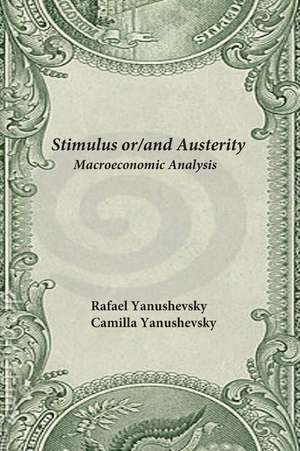Stimulus Or/And Austerity
Autor Rafael Yanushevsky, Yanushevsky, Camillaen Limba Engleză Paperback
Preț: 295.77 lei
Nou
Puncte Express: 444
Preț estimativ în valută:
56.60€ • 60.52$ • 47.19£
56.60€ • 60.52$ • 47.19£
Carte indisponibilă temporar
Doresc să fiu notificat când acest titlu va fi disponibil:
Se trimite...
Preluare comenzi: 021 569.72.76
Specificații
ISBN-13: 9781541374683
ISBN-10: 1541374681
Pagini: 82
Dimensiuni: 152 x 229 x 4 mm
Greutate: 0.12 kg
ISBN-10: 1541374681
Pagini: 82
Dimensiuni: 152 x 229 x 4 mm
Greutate: 0.12 kg
